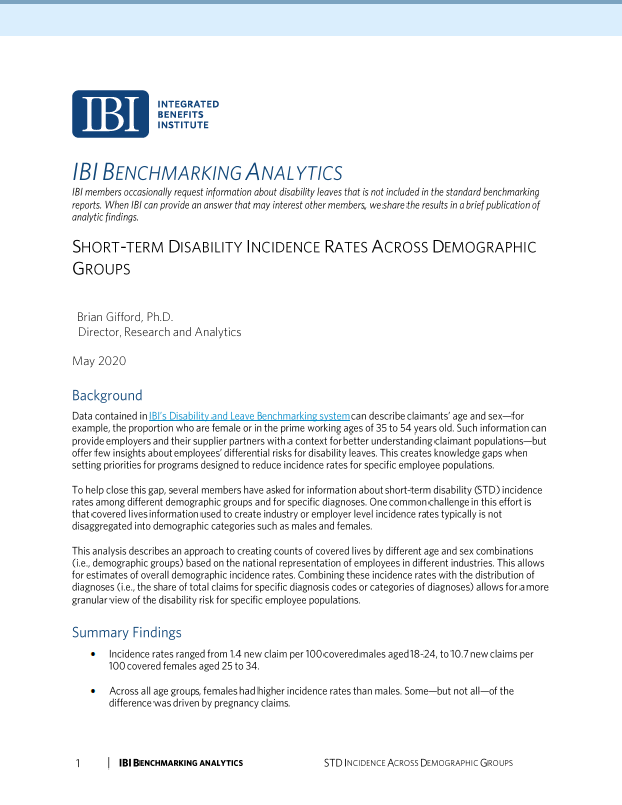This interactive portal improves the analytic experience so you can easily interact with data.
IBI Benchmarking Analytics: Short-Term Disability Incidence Rates Across Demographic Groups

Data contained in IBI's Disability and Leave Benchmarking system can describe claimants' age and sex - for example, the proportion who are female or in the prime working ages of 35 to 54 years old. Such information can provide employers and their supplier partners with a context for understanding claimant populations but offer few insights about employees' differential risks for disability leaves. This creates knowledge gaps when setting priorities for programs designed to reduce incidence rates for specific employee populations. To help close this gap, several members have asked for information about short-term disability (STD) incidence rates among different demographic groups and for specific diagnoses. One common challenge in this effort is that covered lives information used to create industry or employer level incidence rates typically is not disaggregated into demographic categories such as males and females. This analysis describes an approach to creating counts of covered lives by different age and sex combinations based on the national representation of employees in different industries. This allows for estimates of overall demographic incidence rates. Combining these incidence rates with the distribution of diagnoses allows for a more granular view of the disability risk for specific employee populations.
Download Report

















